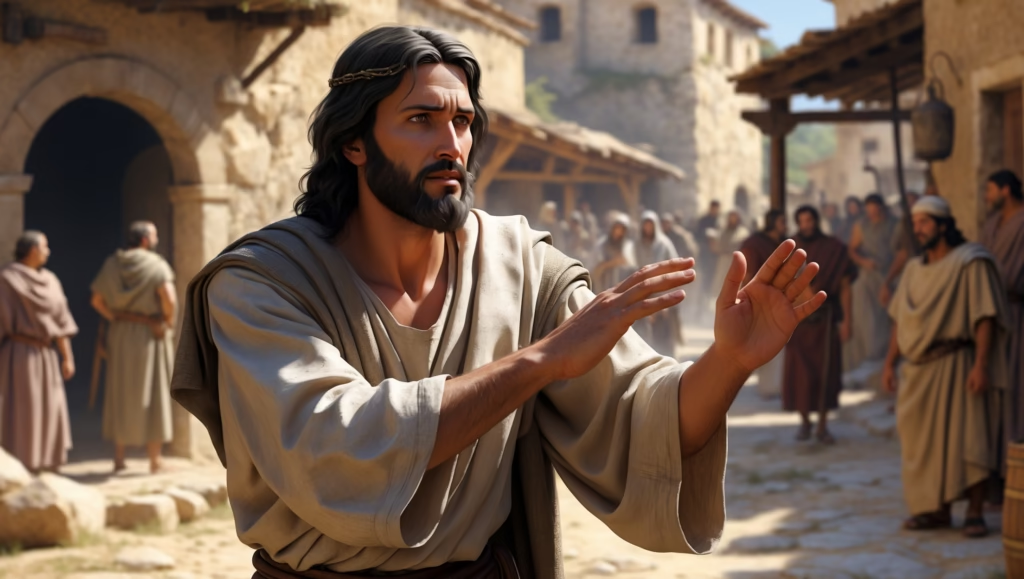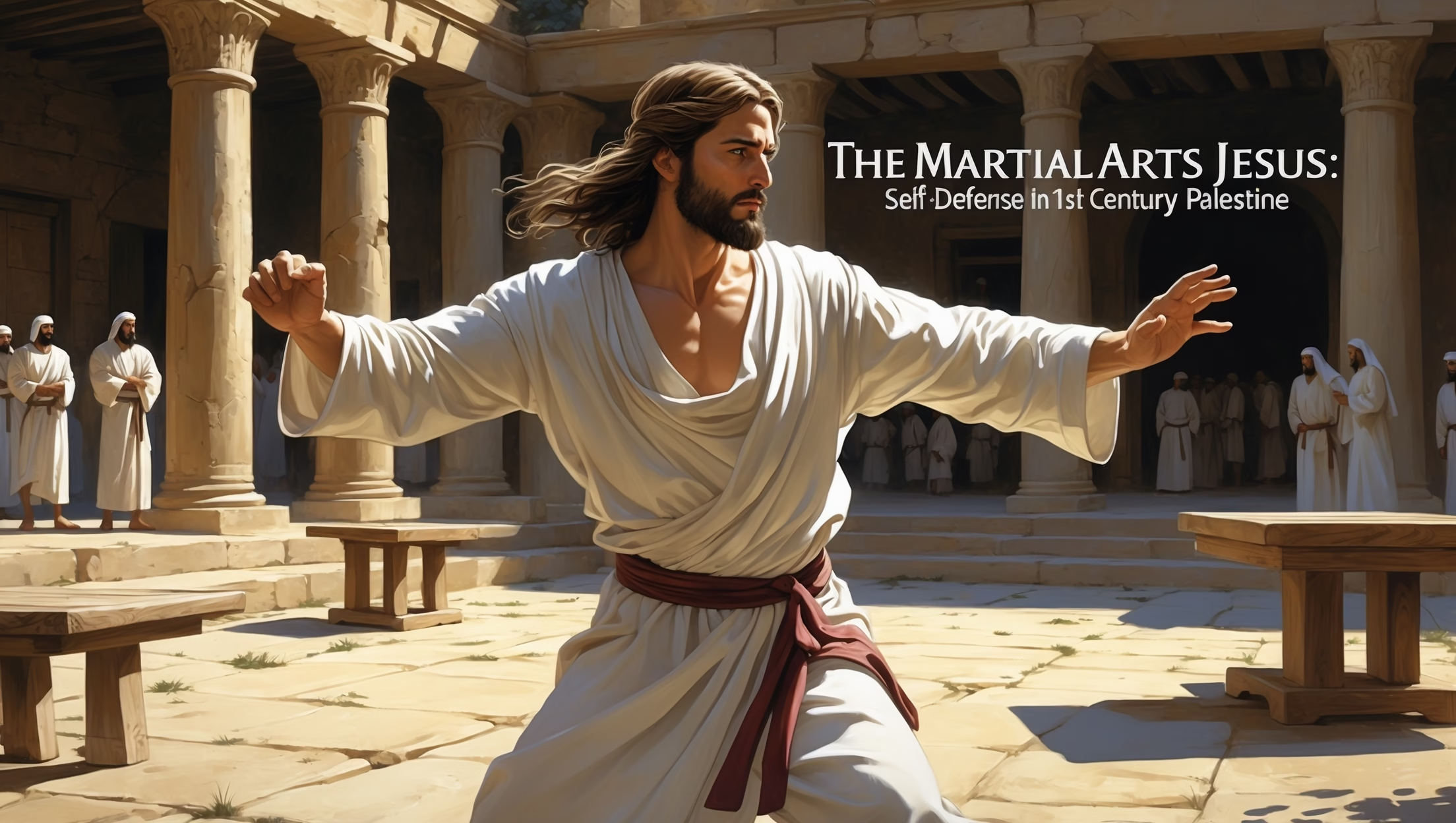Was the Carpenter Trained to Fight?
When people think of Jesus, images of meekness, prayer, and teaching often come to mind. Yet a closer examination of the Gospels reveals a figure who navigated violent threats, political unrest, and personal danger with extraordinary composure and strategic action. Could Jesus’ survival, His ability to confront hostile crowds, and the physicality of His ministry suggest knowledge of self-defense or martial techniques? While speculative, exploring the Martial Arts Jesus offers insight into His practical wisdom, physicality, and the lived realities of 1st-century Palestine.
Historical Combat Context in Judea
Zealot Connections and Political Unrest
Several of Jesus’ disciples had ties to militant movements. Simon the Zealot, for instance, carries a name indicating possible affiliation with the Zealots—Jewish revolutionaries resisting Roman occupation. The political landscape was fraught: insurgencies like Barabbas’ uprising (Mark 15:7) exemplify the violent tension permeating everyday life. Living under Roman rule, traveling through villages, and teaching in public spaces would have exposed Jesus to frequent threats, requiring situational awareness and possibly defensive skill.
Physical Demands of Ministry
Walking hundreds of miles on foot between towns was physically taxing. For instance, Nazareth to Jerusalem—a 90-mile journey—demanded endurance, balance, and coordination. Many of Jesus’ miracles, like overturning temple tables (John 2:15), required strength and spatial awareness. While not necessarily evidence of formal combat training, these feats indicate a body conditioned for physical engagement, making it plausible that Jesus possessed agility and core strength consistent with defensive capability.

Evidence Suggesting Martial Techniques
Footwork and Evasion
Several Gospel passages hint at strategic mobility and situational control. For instance, when an angry crowd attempted to stone Him in Nazareth (Luke 4:30), Jesus “slipped away” without confrontation. Martial arts like Aikido or Wing Chun emphasize redirection, avoidance, and minimal force—principles consistent with His non-violent disengagement from hostile situations.
Turning the Other Cheek: Ethical Self-Defense
Matthew 5:39, the famous teaching to “turn the other cheek,” is often interpreted purely as pacifism. Yet some martial arts philosophies see this as a principle of controlled response: absorbing force without escalation, preserving one’s life and integrity while disarming the aggressor psychologically. Jesus’ strategy consistently favored defusing aggression rather than provoking it, aligning with self-defense ethics practiced in many martial disciplines.
Pressure Points and Healing Touch
Jesus’ miraculous healings sometimes involved physical contact—laying hands, touching eyes, or cleansing lepers. Interestingly, some martial arts, such as dim mak or traditional Chinese medicine, recognize pressure points capable of influencing physiological and energetic states. While healing was supernatural, His precision in touch could reflect an intuitive understanding of the body, harnessing physical technique alongside spiritual authority.
The Temple Confrontation as Martial Performance
One of the most vivid physical episodes is Jesus’ cleansing of the temple (John 2:13-17). Flipping tables, scattering coins, and driving out merchants required both strength and spatial awareness, managing multiple people in a confined area without harming innocents. Some scholars suggest this scene demonstrates controlled aggression, a hallmark of martial discipline: using decisive, proportionate force to accomplish a goal while minimizing collateral damage.
Modern Impact and Interpretations
Krav Maga Churches in Israel
Some contemporary Jewish-Christian communities in Israel and beyond have explored Christlike self-defense seminars, incorporating martial arts such as Krav Maga, designed for practical, real-world defense. While these programs are symbolic rather than historically prescriptive, they highlight a renewed interest in physical preparedness and ethical response to threats, inspired by Jesus’ life.
Ethical Dimensions of Martial Practice
The Martial Arts Jesus is not a call to violence but to mindful, responsible action. His teachings emphasize restraint, de-escalation, and protection of the vulnerable—values mirrored in many martial arts philosophies. Today, Christian self-defense programs often combine spiritual formation with physical training, echoing Jesus’ holistic approach to navigating danger with wisdom and integrity.
Cultural and Theological Resonance
Exploring Jesus through a martial lens challenges cultural stereotypes of passivity. It underscores that His ministry involved courage, strategic thinking, and physical resilience—qualities essential to thriving in hostile environments. Additionally, this perspective enriches discussions on discipleship, suggesting that embodying Christ includes cultivating mental, spiritual, and physical discernment.
Scholarly Perspectives
- Dr. John Polkinghorne (Physicist-Theologian):
“Physicality in Jesus’ ministry cannot be ignored; walking long distances, responding to mobs, and teaching in outdoor spaces demanded embodied wisdom.” - Dr. Grant Macaskill (University of Aberdeen):
“While martial arts as we know them didn’t exist in 1st-century Palestine, Jesus demonstrated adaptive, situationally aware behavior consistent with defensive strategy.” - Comparative Religious Studies:
Scholars note parallels between nonviolent resistance in Jesus’ teachings and martial philosophies emphasizing discipline, restraint, and ethical engagement, suggesting cross-cultural lessons for modern practitioners.
Why This Matters Today
- Reframing Passivity: Viewing Jesus as strategically resilient encourages believers to engage with challenges thoughtfully rather than reactively.
- Integrating Body and Spirit: Jesus’ example shows that discipleship is not purely intellectual or spiritual—it is embodied, encompassing ethical, mental, and physical dimensions.
- Practical Ministry Applications: From navigating hostile environments to fostering personal safety in ministry, understanding the Martial Arts Jesus offers insights for contemporary pastors, missionaries, and laypeople.
- Ethical Self-Defense: His life models how to confront evil without compromising moral principles, an essential consideration for Christians in a violent or unjust world.
Conclusion
The image of Jesus as a martial figure may seem unconventional, but it deepens our understanding of His life, ministry, and discipleship. Far from a passive teacher, He navigated danger with agility, strategic foresight, and ethical courage. Whether evading stoning mobs, cleansing the temple, or guiding disciples through hostile territories, Jesus exemplified principles akin to nonviolent martial arts: situational awareness, controlled response, and protection of the innocent.
In modern practice, from self-defense seminars to contemplative movement disciplines, the Martial Arts Jesus reminds believers that faith is holistic, integrating mind, body, and spirit. His example challenges us to approach conflict with wisdom, courage, and compassion—qualities that remain as relevant today as they were in 1st-century Palestine.








